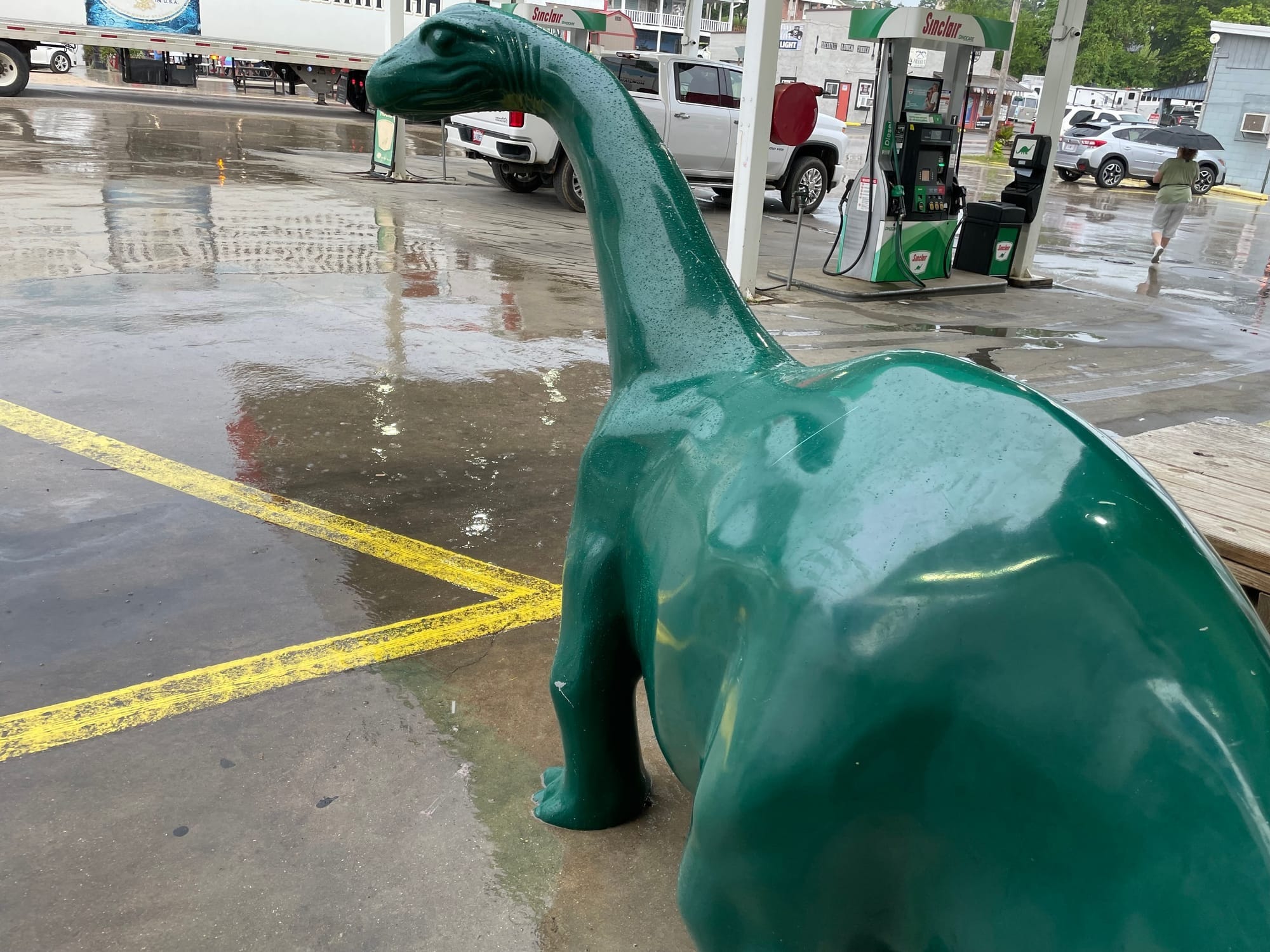Last month was the hottest January in the historical record, according to the Copernicus climate service, the Earth observation component of the European Union’s Space program. It was the 18th of the past 19 months in which the average global temperature rise exceeded 1.5° Celsius (2.7° Fahrenheit) over the pre-industrial era. Around the world the January rise was 1.75°C (3.15°F) warmer than before greenhouse gas emissions began increasing significantly about a century and a half ago. It was 0.1°C (0.18°F) above the record set in January 2024.
Bill McGuire, Emeritus Professor of Geophysical and Climate Hazards at University College London, told Newsweek, "The fact that the latest robust Copernicus data reveals the January just gone was the hottest on record, despite an emerging La Niña, which typically has a cooling effect, is both astonishing and, frankly terrifying." One key marker has been the incredible rise in ocean surface temperatures. "On the basis of the Valencia [Spain] floods and apocalyptic L.A. wildfires, I don't think there can be any doubt that dangerous, all-pervasive, climate breakdown has arrived," he said.
Meanwhile, the Trump administration is busily removing any reference to “climate” or “climate change” from federal documents and websites, and Lee Zeldin, newly in charge of the Environmental Protection Agency, this week issued the “five pillars” of the EPA mission going forward. This comes under the rubric of “Powering the Great American Comeback.” Pushing “American energy dominance”—code for fossil fuel and nuclear expansion—is one of the pillars. Addressing climate is not.
Indeed, Zeldin told the ultra-right Breitbart News: “In the name of climate change, Democrats during the Biden administration wasted tax dollars in a way that was inexcusable, unjustifiable, and illegitimate. We don’t want to waste a penny. It is important that we are pursuing this agenda of having cleaner air, land, and water without wasting any tax dollars at all. There has been talk through the years about how the world was imminently about to end because of climate change, and in the name of that threat there was a push to do some crazy things.” The timelines of those predictions of “climate change” ending the world have “come and gone.”


That wasn’t how he talked at his confirmation hearing. But then evasions, hemming and hawing, and outright lying is standard procedure for Republican nominees facing Senate hearings. As for those world-ending predictions, while some activists have suggested the climate apocalypse is just a handful of years away, you’d be hard-pressed to find many scientists who think so. But plenty of them predict disastrous effects if we don’t stop burning fossil fuels and otherwise contributing to the atmosphere’s carbon burden. And there is growing evidence that the changes are accelerating.
As if the latest record-breaking temperatures weren’t enough, a new study led by one of the world’s most renowned climatologists, James Hansen, has been published in the journal Environment: Science and Policy for Sustainable Development. Thirty-seven years ago Hansen testified about the threat of climate change to the U.S. Congress, bringing the issue to a broader public for the first time. He’s been sounding the alarm ever since. Of the new study, Hansen told Damian Carrington at The Guardian, “The Intergovernmental Panel on Climate Change (IPPC) defined a scenario which gives a 50% chance to keep warming under 2°C — that scenario is now impossible. The 2°C target is dead, because the global energy use is rising, and it will continue to rise.” Without geo-engineering, Hansen has said, we cannot get the situation under control. Others say geo-engineering could have its own unintended disastrous effects.
A 2°C (3.6°F) rise is what scientists have called the absolute limit before climate disasters start becoming severe. Given what the world has witnessed in the past few years, the severity of climate-related events is obviously gaining steam without having hit that milestone. Based on nations’ existing pledges of emission cuts under the non-binding Paris Climate Agreement, the scientific consensus is that we’re headed for a rise of about 2.7°C (4.86°F) by century’s end. But few nations are on track to fulfill those pledges. And the science-denying president of the nation that emits the second highest levels of carbon after China, has the world’s highest per capita emissions rate among rich nations, and has over its history emitted more greenhouse gases than any other nation has again announced its withdrawal from the Paris pact.
Hansen’s researchers attributed the unexpected recent record-breaking to Earth systems being more sensitive to the effects of carbon emissions than previously estimated and, ironically, the limits placed on sulphate emissions from global shipping. Previously, sulphate particles in the atmosphere reflected more sunlight from reaching the Earth, providing a cooling effect. Pollution controls adopted in 2020 have reduced those particles, allowing more sun light to reach the surface.
The team’s estimate of the impact of this extra sunlight is much higher than five other recent studies. The team used a top-down approach looking at changes in reflectivity over the ocean, while the other studies used a bottom-up approach to estimate heat rise. Said Gavin Schmidt, director of Nasa’s Goddard Institute for Space Studies, where Hansen was director for 44 years until 2013, “Both approaches are useful and often complementary. But I think in this case, Hansen’s approach is too simple and doesn’t factor in changes in Chinese emissions, or internal variability.”
Hansen has long been an outlier among climate scientists, predicting among other things a larger temperature rise happening sooner than most of them, so they, like Schmidt, have voiced caution about his recent work. But Zeke Hausfather, a climate scientist who was not part of the study, told The Guardian it was a useful contribution. “It’s important to emphasize that both of these issues—[pollution cuts] and climate sensitivity—are areas of deep scientific uncertainty. “While Hansen, et al. are on the high end of available estimates, we cannot say with any confidence that they are wrong, rather that they just represent something closer to a worst-case outcome.”
Whether Hansen’s team has it right or not, Lee Zeldin as well as the new administration’s devotees of various forms of climate science denial, appear determined to work us toward a worst-case outcome. As tempting as it always is to label as “idiots” those who adopt the idiocy of shrugging off climate impacts, they are far more malevolent than that. With few exceptions, they know the perils are real and they figure their wealth or limited lifespan will shield them, and they just don’t give a damn about anybody else.
—Meteor Blades
WEEKLY ECO-VIDEO
RESOURCES & ACTION
- From Dan McCarthy and Jeff St. John at Canary Media, here’s every Biden-era energy loan. The DOE Loan Programs Office gave out $107 billion to 53 projects, from EV factories to a nuclear-plant restart. But the fate of the loans is unclear under Trump.
- Climate and Economic Justice Screening Tool
HALF A DOZEN OTHER THINGS TO READ (OR LISTEN TO)
If DOGE Goes Nuclear. The risk of messing with the wrong computer system by Ross Andersen at The Atlantic. You may have never heard of the National Nuclear Security Administration, but its work is crucial to your safety—and to that of every other human being on the planet. If Elon Musk’s Department of Government Efficiency (DOGE) hasn’t yet come across the NNSA, it surely will before too long. What happens after that could be alarming. As recently as yesterday morning, Musk made clear that DOGE will go line by line through the government’s books looking for fat targets for budget-cutting, including those that are classified—especially those that are classified. DOGE employees are bound to notice NNSA, a 1,800-person organization that sits inside the Department of Energy and burns through $20 billion every year, much of it on classified work. But as they set out to discover exactly how the money is spent, they should proceed with care. Musk’s incursions into other agencies have reportedly risked exposing sensitive information to unqualified personnel, and obstructing people’s access to lifesaving medicine. According to several nuclear-security experts and a former senior department official, taking this same approach at the NNSA could make nuclear material at home and abroad less safe.


Trump Mulls Canceling Loans From $400 Billion Green Bank by Ari Natter at Bloomberg Green. The Trump administration is exploring legal options to cancel loans issued under a $400 billion program to finance clean-energy technology as it considers overhauling the initiative, according to a person familiar with the matter. The newly installed director of the Energy Department’s loan program, John Sneed, told agency officials in a meeting last week the effort will be retooled to focus on technologies favored by the new administration such as nuclear power and liquefied natural gas, according to the person who wasn’t authorized to discuss the matter publicly. Sneed also has said he’s exploring canceling existing financing deals, although it remains to be seen if that would be legally viable and no decisions have been made, the person said. In an email, the Department of Energy said the loans are being considered as part of an agency-wide review “to ensure all activities are consistent with President Trump’s executive orders and priorities.” The initiative, which was created under President George W. Bush and named the Loan Programs Office, provides guarantees and direct financing for innovative energy projects that reduce greenhouse gas emissions.
Our brains are filling with more and more microplastics, study shows by Shannon Osaka at The Washington Post. A paper published Monday in Nature Medicine found that the tiny fragments of plastic are passing the blood-brain barrier and into human brains, and the amount of microplastics in the brain appears to be increasing over time. The concentration of microplastics in analyzed brains rose by about 50 percent from 2016 to 2024. The scientists also examined the brains of 12 deceased patients diagnosed with dementia, and found that they had three to five times as much microplastics as normal brains. “Every time we scratch the surface, it uncovers a whole host of, ‘Oh, is this worse than we thought?’” one of the paper’s lead authors, University of New Mexico toxicology professor Matthew Campen, said in an interview about an earlier version of the paper.
Related: Microplastics Block Blood Flow in Brains of Mice


Trump’s Interior Department sets up a fierce public lands fight through a directive hidden in plain sight by Clark Mindock at his Landmark substack. Newly confirmed Interior Secretary Doug Burgum signed sweeping orders this week to encourage increased American fossil fuel energy production, taking a big step toward fulfilling President Donald Trump’s promise to relax restrictions on mining and drilling federal land. As part of the effort, Burgum’s orders quietly threaten to redraw and shrink the boundaries of national monuments created by previous presidents to protect unique cultural resources and natural lands. Doing so would spark fierce legal fights and has already raised environmentalists’ concerns. “We are committed to working collaboratively to unlock America’s full potential in energy dominance and economic development to make life more affordable for every American family while showing the world the power of America’s natural resources and innovation,” Burgum, whose department oversees some 500 million acres of public land, said in a statement.
How Tearing Down Small Dams Is Helping Restore Northeast Rivers by Lela Nargi at Yale Environment 360. More than 30,000 small dams currently block river tributaries from Maine to Maryland. New initiatives to remove them are aimed at restoring natural flows, improving habitat for aquatic life, and reopening thousands of river miles to migratory fish, from shad to American eels. [...] Dam removals in the Northeast don’t generate the same media attention as massive takedowns on West Coast rivers, like the Klamath or the Elwha. That’s because most of these structures are comparatively miniscule, built in the 19th century to form ponds and to power grist, textile, paper, saw, and other types of mills as the region developed into an industrial powerhouse.
Clean energy stakeholders descend on Capitol to lobby for IRA tax credits by Diana DiGangi at Utility Dive. As Congress weighs clawing back Inflation Reduction Act funds to pay for other items in its upcoming 2025 budget, the Solar Energy Industries Association and other groups led a Wednesday lobbying blitz on Capitol Hill, bringing industry representatives there for “over 100 meetings,” the group said. SEIA also sent a letter signed by around 1,500 solar and storage companies to each congressional office, urging lawmakers to “keep in place the solar and storage energy and manufacturing credits in any tax package that may move forward in the 119th Congress.” “With support from federal clean energy policies, American solar manufacturers can now produce enough modules to meet all demand for solar in the United States,” said Abigail Ross Hopper, president and CEO of SEIA. “It’s critical that our elected leaders understand the impact of these policies and the jobs and investments they bring to their constituents.”
WEEKLY BLUESKY POST


RESEARCH & STUDIES
- Polar bear population decline the direct result of extended 'energy deficit' due to lack of food. Study finds the animals are struggling to get enough to eat in face of dwindling sea ice due to climate change.
- Clean air policies having unintended impact driving up wetland methane emissions by up to 34 million tons
ECOPINION


From the Port to Your Porch, Every Part of the Freight System Can Get Cleaner by Steven Higashide at the Union of Concerned Scientists. Freight has an outsized impact on human health and the climate. Medium- and heavy-duty vehicles (which include the heaviest pickup trucks and vans as well as commercial trucks and buses) make up just over one of every ten vehicles on the road, but are responsible for over half of smog-forming and fine particulate pollution and nearly one-third of climate warming pollution from on-road vehicles. The pollution from these vehicles is responsible for over 4,400 premature deaths every year, as well as thousands of emergency room visits and millions of lost school days. It is concentrated in neighborhoods like the McKinley Park neighborhood in Chicago, which sits near e-commerce warehouses, highways, and railyards. For decades, community groups—especially those in the environmental justice movement—have fought for a cleaner freight system. Andrea Vidaurre, a co-founder of the People’s Collective for Environmental Justice (in California’s Inland Empire), has put it this way: “What ends up in your stores and online shopping carts has to come through neighborhoods like mine first, and before it comes to my community it passes through many others worldwide completely powered by fossil fuels.”
Sean Duffy’s War on Transportation Safety by Kate Aronoff at The New Republic. As Duffy’s Department of Transportation chides the Biden administration for prioritizing “woke” policies over “safety, efficiency, economic prosperity, and regulatory reform,” its own preoccupation, so far, seems to be demonstrating that it is “anti-woke.” Among Duffy’s first acts in office was an order indicating that DOT lending, grantmaking, and contracting should prioritize communities with “marriage and birth rates higher than the national average.” The language of that and another sweeping memo signal the department may try to withdraw funding from cities and states for such infractions as issuing “vaccine and mask mandates” or failing to collaborate with federal immigration authorities by creating sanctuary cities. The upshot of all this is that parts of the country that aren’t in lockstep with Trump’s agenda could find it even harder to keep their roads and mass transit systems in safe, working order.


Kelp Farming Isn’t As Green As It Seems by Veronique Carignan at UnDark. Growing kelp may appear like a simple strategy for removing atmospheric carbon, but the practice has many pitfalls. As one of the fastest growing organisms in the world (some species can grow up to 2 feet per day), kelp gains biomass quickly and thus sequesters carbon quickly. Natural kelp forests capture 5.4 million tons of carbon dioxide annually and are worth an estimated $500 billion, including their value in the food and materials industries. But even more money likely lies in the unexploited coastal ocean suitable for growing kelp, which spans an area of around 18 million square miles. Given the space available for aquaculture and the tremendous value of kelp, it is no surprise that seaweed is one of the fastest growing components of global food production, increasing on average 8% per year. Companies seeking to capitalize on the obvious value of kelp farming are using its supposed carbon sequestration potential as a hook to expand the practice, raise funds, or sell carbon credits. However, scientists have questioned whether kelp farming acts to store carbon long term. Although kelp does absorb carbon dioxide through photosynthesis, the long-term sequestration of that carbon is limited by a process called the slow carbon cycle.
Big Oil and Gas Goes Long With Super Bowl Greenwashing by Dana Drugmand at Sierra magazine. As New Orleans readies to host Super Bowl LIX this Sunday, a volunteer ambassador program has been working to help welcome the hundreds of thousands of football fans streaming into the Big Easy. Who is sponsoring that program? Chevron, one of the world’s biggest oil and gas producers and a top climate polluter. Chevron is not the only fossil fuel company assisting New Orleans in hosting the big game. In August 2023, Entergy, an energy utility company and active player in the oil and gas business, announced that it would be a founding partner of the 2025 Super Bowl Host Committee. [...] Another recent analysis of fossil fuel sponsorships in sports worldwide found 205 active deals totaling over $5.6 billion. That, too, is very likely an underestimate as most deals lack transparency about the details or precise amount of money involved, says the New Weather Institute, a UK-based think tank that produced the study. Industry critics see this cozy relationship between polluting industries and professional sports as greenwashing, or “sportswashing.” “The [oil and gas] companies benefit from sponsorship by tying their brand to the ecstatic nature of a local sports team and being a community hero, when they very much do not want to be seen as a climate villain,” George explained.


Pushing Back, Short-Term and Long: How to Make Progress Part II by Bill McKibben at his The Crucial Years substack. First things first—this is the most desperate moment I can remember in my life as an American, and neither I, nor anyone else, has any plan that’s going to fix it in short order. Real and painful things are happening by the minute—just in our world of climate advocacy, as Zahra Hirji and Canielle Bochove made clear with excellent reporting this morning, illegal funding cutoffs have caused “confusion and panic among groups and researchers that work on clean energy, climate change and environmental justice.” If you’re a glutton for punishment, the Times has a litany of similar stories from IRA-funded projects across the nation. And that’s nothing compared to the trauma that immigrants, and transgender Americans, and federal workers, and overseas AIDS patients, and lots of others are feeling. Even for those who are not for the moment directly affected, the sight of Elon Musk and his minions enthusiastically trashing systems that took decades of careful bipartisan work to build is nauseating. That said, there are signs these last days that some kind of opposition is finally starting to find its feet—that the shock and awe are producing a reaction of gathering resolve. As groups like Third Act and Indivisible have flooded switchboards with calls and rallied outside the Treasury, some Congressional leaders have begun to find their voice.
OTHER GREEN STUFF
California Decides What ‘Regenerative Agriculture’ Means. Sort of.
Disease surges in Indonesia community on frontline of world energy transition
How Trump’s EPA Threatens Efforts to Clean Up Areas Affected Most by Dangerous Air Pollution











Comments
We want Uncharted Blue to be a welcoming and progressive space.
Before commenting, make sure you've read our Community Guidelines.